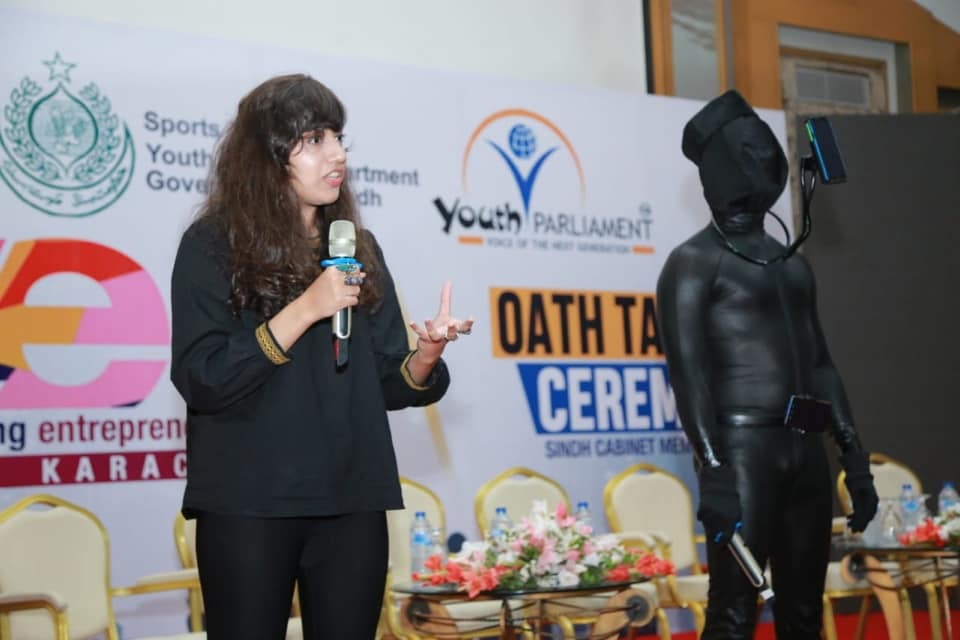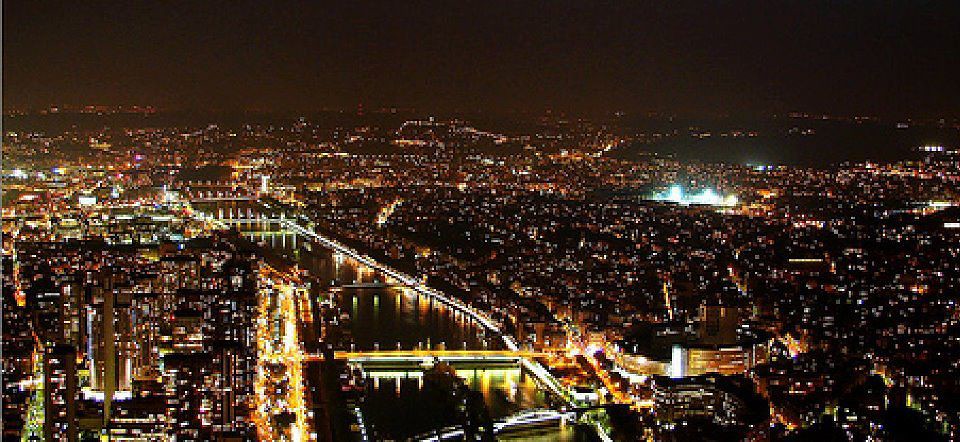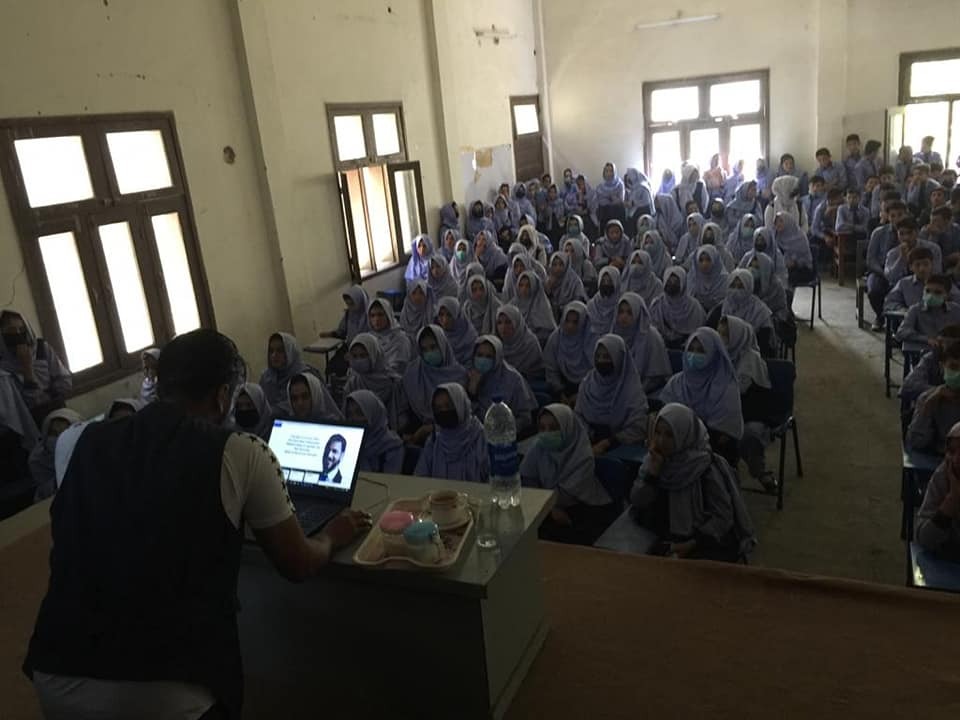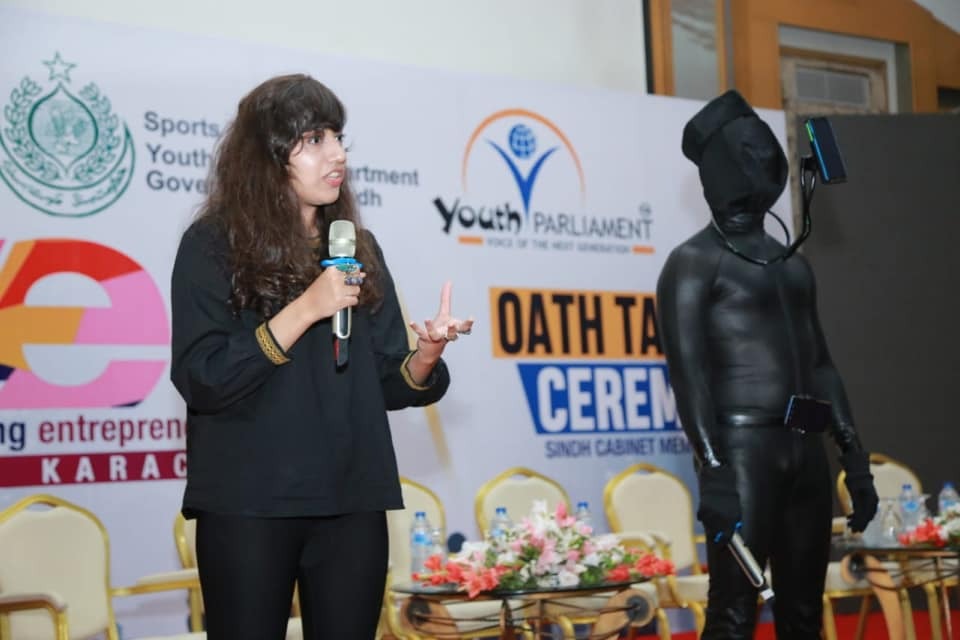Arguably, the light bulb is the most transformative invention humans have invented so far. We can push back the veil that would naturally wrap our lives each night by flicking a switch or pushing a button. Now, we work long after the sunset. We play games outside until the hours into double digits. We more safely roam city streets after dark.
But the dark side is that it snatched dark nights. The excess light we ditch into our environments endangers ecosystems. It harms animals whose life cycles depend on the dark.
We’re endangering ourselves by altering biochemical rhythms that generally ebb and flow with natural light levels. And in a primal sense, we’ve lost our connection to night skies, the tapestries into which our ancestors knitted their star-studded stories, timed the planting and harvesting of crops, and deduced the physical laws governing the cosmos.
Scientia Pakistan reached out to Rayan Khan to dig deep into these issues caused by light pollution for our exclusive edition on ‘Solar system’. Rayan is the founder of Cosmic Tribe Pakistan and an ambassador at the International Astronomical Union of Dark Skies.

Saadeqa: Would you like to share about your life and career?
I am the founder of Cosmic Tribe and ambassador at the International Astronomical Union of Dark Skies, an international astronomical union. They selected a hundred ambassadors globally. I am also a delegate at the International Dark-Sky Association and IAU – NAEC National Astronomy Education Coordinator, Young Persons Committee Head of Royal Aeronautical Society Pakistan Division. These are some of my designations.
Besides, I am raising awareness on light pollution in Pakistan through my venture “Cosmic Tribe”. We started raising awareness in Pakistan through STEM educational activities and outreach activities in schools, especially academic training programs in space and astronomy.
Saadeqa: How exactly are you linked to ISST?
I studied at ISST, and I’m working with ISST on a project as IAU NAEC National Astronomy Education Coordinator with Dr. Javaid Iqbal. Although I’m not directly linked with ISST, I’m working for a self-funded organization that I started back in 2019.
It was ISST’s first batch in 2016 for graduation in space sciences. I completed my master’s with a specialization in Astrophysics in 2020. Before that, I used to work for an airline. I have almost nine years of aircraft maintenance engineering experience. I also have an aircraft maintenance license and am a certified aerospace apprentice.
Saadeqa: How did you develop your interest in astronomy?
I lived near an airport in my childhood visited there more often, which is how I developed an interest in aerospace. Before restarting my education back in 2016, I used to work for an airline as an aircraft assistant engineer.
Later on, I found my interest diverted to astronomy, and I decided to complete my master’s in space sciences. It might be because I had a gap of eight years to find suitable circumstances to kick start my education again. Astrophysics was not my primary goal initially.
I pick astronomy to discover more about the universe and our existence on Earth. I did not give up on my degree with all these ups and downs.
Saadeqa: Let us know about light pollution and whether artificial lights are included in it?
When we talk about light pollution, all the artificial lights on Earth are included. Streetlamps, the lights in our houses, shopping malls, parks, hotels, etc., are all-cause light pollution. It took almost 150 years of evolution that a citizen started the light bulb, and now we have a light-based smartphone and evolved very quickly.
We are primarily unaware of light pollution. When we talk about artificial lights, even your smartphone light can cause light pollution that disturbs mental health. This is why on the website darksky.org, it is mentioned that we should use dark mode on mobile phones to minimize the increasingly damaging effects of light pollution in our lives.
Star link constellation also causes satellite constellation pollution, which is another sort of light pollution. It isn’t straightforward somehow. It is evolving every day as it’s only 150 years old now.
Almost 99 percent of the US and Europe are covered with light-polluted areas meaning they cannot see the night sky wholly dark and clear. Globally, nearly 83 percent of the population is living in light-polluted areas. Obviously, a significant fraction cannot be ignored, increasing 2 percent annually.
It took almost 150 years of evolution that a citizen started the light bulb, and now we have a light-based smartphone and evolved very quickly.
Saadeqa: Let us know about your work and experience as the International Astronomical Union Dark Skies Ambassador)?
When IAU selected me as their ambassador, I started talking about light pollution on several platforms and outreach. I was shocked to know that many people are entirely unaware of light pollution. We live in Karachi, the city of lights, yet we are unaware of it. We are already coping with other types of pollution and issues like transportation waste management.

I used art as a tool to advocate and educate people about light pollution. I started a costume in public spaces. In that costume, there is smartphone integration. My smartphone is equipped with one application that converts my sound into light. When I speak, the light on my mobile phone screen blinks, a part of my costume.
Talking about the fact that we live in a city of lights and we use smartphones having light-based technologies. Are we smart enough to use innovative technologies with pertinent information about their side effects? But whenever I talk about these issues in public, I find the strange feeling of an alien, like nobody, is interested in a serious problem that is a growing threat to our mental health.
Saadeqa: Let us know about the negative consequences of light pollution on human and animal health and plants?
There are some basic types of light pollution. When we talk about streetlights, they cause trespass, glare, light cluttering, and skyglow. As I mentioned earlier, light-based technology, i.e., smartphones, can cause severe psychological health issues in users.
Regarding the effects on the environment, nocturnal birds, migrate from one place to another using the night sky. Because of increasing light pollution, they get distracted, and eventually, they die. Wildlife experts have been raising this issue for a long time that thousands of migratory birds die each year because of light pollution. Similarly, Turtle hatching or birds like owls, etc., an imbalance is created in the predator-prey relationship.
They cannot eat anything because of all these artificial lights. They cannot hunt and catch to survive. Recent research shows that almost 40 percent of insects get affected by light pollution, which means that LP is negatively impacting the food chain. At the same time, it also causes energy wastage and gives rise to climate change.

Saadeqa: How does light pollution interlink with climate change?
We burn fossil fuels to generate energy for illuminating our houses, streets, shopping malls, and everything around us, which is a necessary part of our modern lifestyle. It means we are consuming more fuel from the environment.
Likewise, nocturnal birds, their migration and health, insects; yes, they all are getting affected by our irresponsible activities. Plants cannot grow properly because of artificial lights in houses and streets. To photosynthesize and produce oxygen, they need darkness. Photosynthesis has light-independent stages as well, so those are disturbed.
Saadeqa: How has light pollution been measured and studied in recent days?
Light pollution is measured through Sky Quality Meter or Bortle scale. This scale has different grades from 1 to 9. If sky quality is 1, it means the sky is beautiful and dark, whereas if SQM is 9, it stands for a heavily light-polluted area. Apart from that, SQM is also handy, generally used by astronomers or astrophotographers to measure sky quality.
There is a website called Light Pollution Map, which is also helpful. It uses an SQM as well. Citizen Science Project named ‘Globe at Night’ for light pollution awareness issues, meter recording each month. Everyone can be a part of their data collection globally. A lot of people participate in that activity and submit their data. When there is a fully dark sky each month, at the new moon, they start their activities, which continue for ten days. They have a complete record of 12 to 14 years on their website.
One more exciting thing that I would love to mention is that in 2019, Australian Dark Sky Alliance ADSA accepted a challenge and received almost 10,000 entries using this Citizen Science Project. They made a World Guinness Record of light pollution recording entries globally.
Saadeqa: Which parts of the world are regarded as thickly light-polluted, and where does Pakistan stand?
Mostly the US and Europe are fully covered with light-polluted areas. France, the US, Europe are all also included in this list. In Pakistan, light pollution is gradually increasing, especially in Karachi. The unplanned overgrowing urbanization could result in a disaster or catastrophe regarding human health.
There’s a severe lack of awareness on protecting the night sky or using ‘shielded’ light. Some standard procedures like covering and using certain angles for minimizing lighting effects in houses may be helpful.
The efforts are in the early stages in Pakistan, but this is a proactive action protecting against light pollution. We need urgent measures and reforms in Astro-tourism or Eco-tourism, especially in Baluchistan and Nothern areas, with full dark skies with no light pollution due to less population. It’s like our asset and heritage for the next generation.
Saadeqa: What are Artificial Space Objects? How are these bringing light pollution to the planet, and how can we reduce these?
When we talk about Elon Musk’s Starlink satellite constellation, space-based objects that we use nowadays are causing light pollution, especially for the astronomers who use optical telescopes or Astrophotographers who capture the night sky.
How can we protect night skies? Recently, from last 2 to 3 years, there has been a meeting on Dark and Quiet Skies for Science and Society, organized by United Nations. It is highlighted that countries should take action against or provide/suggest alternatives to minimize light pollution caused by star-linked satellites.
A possible solution is to use ‘sun visors’ on Starlink satellites constellation or improvise the methodology to turn them less light-polluted.
Saadeqa: Do LED lights reduce LP, as the primary purpose of putting up these lights in houses is to reduce glare?
LED lights are energy-efficient lights, but they are not light-pollution efficient. They could be effective only at temperatures below 3000 K, almost warm lights, or light-color temperature. Moreover, they should be covered and shielded, provided by the standards on the Dark Sky website. (darksky.org)
Indoor lights may affect our health like if we are using bright white light in our bedroom, it will affect our sleep pattern and circadian rhythm. If we use white lights or rich blue lights or color temperature above 4 to 5000 K, we won’t sleep properly at night.
We must use color temperature below 3000 K, and recently one more amendment has happened in which color temperature has been further lowered down to 2000 something.
In Pakistan, it is regrettable that we don’t have indoor and outdoor lighting policies, which is a necessary part of urbanization in modern cities around the globe.

Saadeqa: Would you like to brief us on your efforts for light pollution awareness?
My primary focus is on policymaking and its implementation. I had been a part of the Sustainable Lighting Policy Fellowship organized by Learners Republic. Besides, I proposed a lighting policy and am working on light pollution awareness through art and STEM or STEAM educational training programs. We have various programs under the umbrella of Cosmic Tribe for different grades; for more details, visit our website www.cosmict.org.
It is crucial to teach kids about the significance of dark skies. As we know, kids are more curious and eager to learn about something, which is sci-fi. These days its importance increases because kids spend much time on smart devices and eventually get affected by light pollution, which is harmful to their tiny brains.
Saadeqa: Do kids easily grasp the concept that we are part of a ‘bigger’ world, i.e., beyond the Solar system?
Yeah, why not. If we teach kids how vast the universe is, they can easily understand that the universe is not limited to our solar system.
In Cosmic Tribe, we provide kids training sessions and workshops on star mapping to use astronomical tools, especially for students aged 10 to 16. They can use robotic telescopes and engage in these activities online, even without having their own telescope.
We now use robotic telescopes for our activities for the students of far-flung areas because it is crucial for our future generation to learn about space sciences. After all, the ‘space rush’ is happening globally.
Saadeqa: Pakistan’s astronomy circles that are untied. Which efforts do you think are necessary to collaborate on one platform?
We have many astronomical societies in Pakistan, like Lahore Astronomical Society, Karachi Astronomers, Pak Astronomers, Baluchistan Astronomical society, etc. But, yes, I accept that their efforts to promote astronomy or space science are limited.
Recently International Astronomical Union worked on a significant issue of astronomical education through professional training programs. They initiated an educational program and selected eight members from Pakistan. The Director of ISST is a part, and I am also included in this team.
We are working on astronomy education professionally or righteously. Not just as an amateur for stargazing or Astrophotography but to learn about astronomy more systematically. Every vocabulary and definition should be standardized in astronomical education at primary and secondary school levels, not just undergrad or advanced level.
Also, Read 20 for 2020: The best in Astrophotography by Pakistani photographers.

Saadeqa Khan is the founder, CEO, & Editor-in-Chief of Scientia Pakistan. She’s a member of the Oxford Climate Journalism Network (Second Cohort) and NASW. Saadeqa is a fellow of NPF Washington, The Falling Walls Foundation, and the Science Journalism Forum. Saadeqa has won several international journalism grants and awards for her reports.

